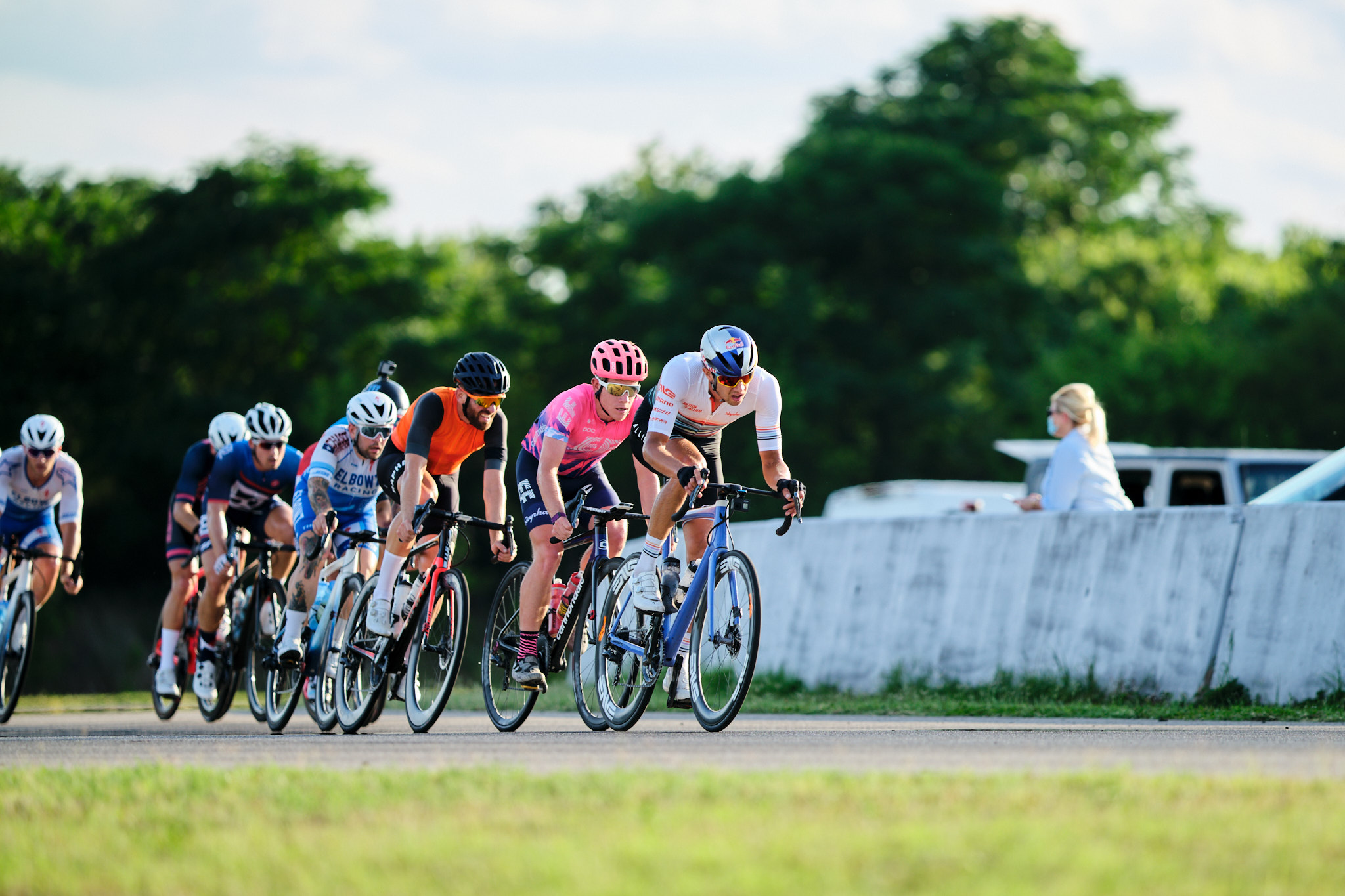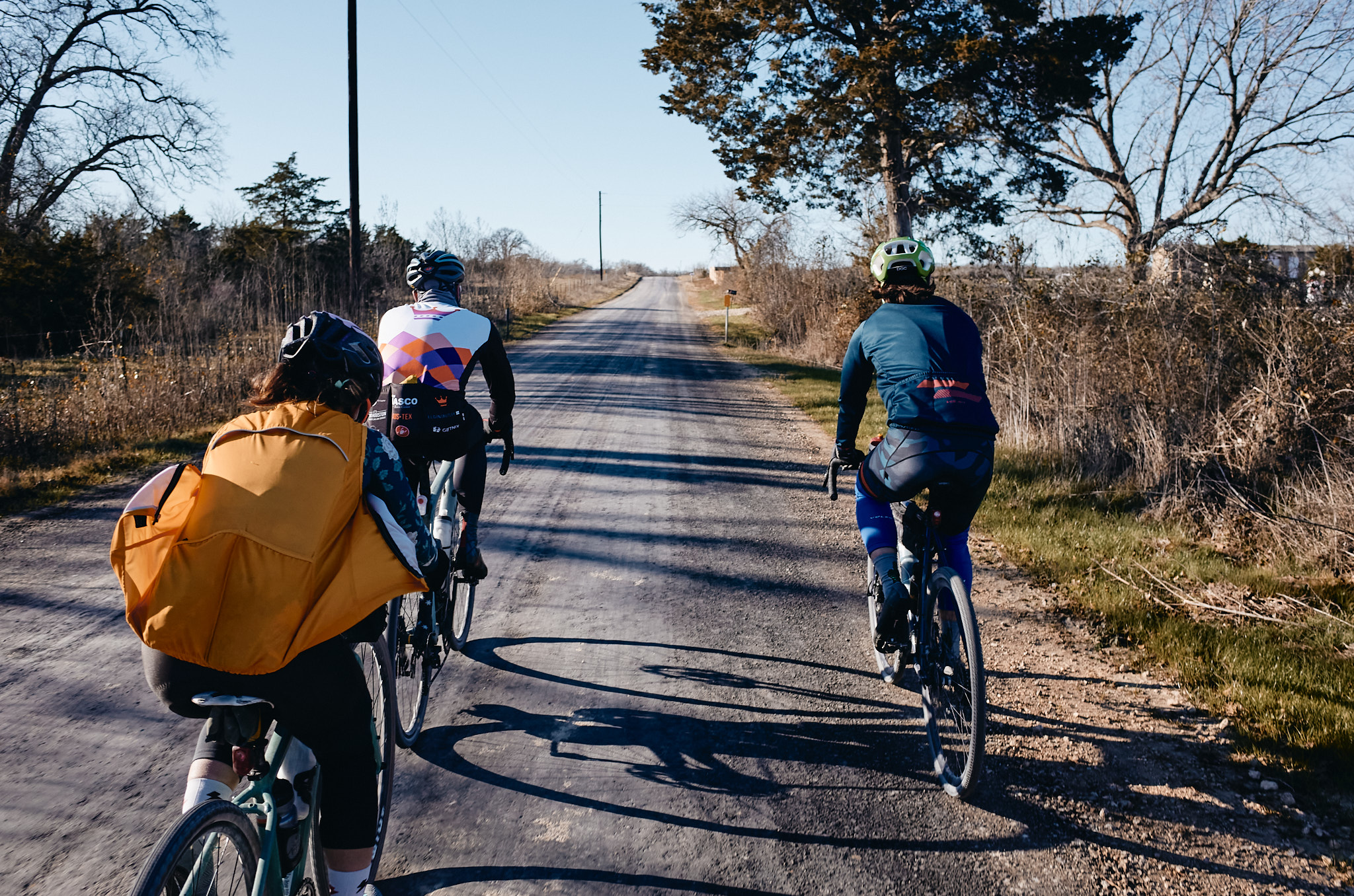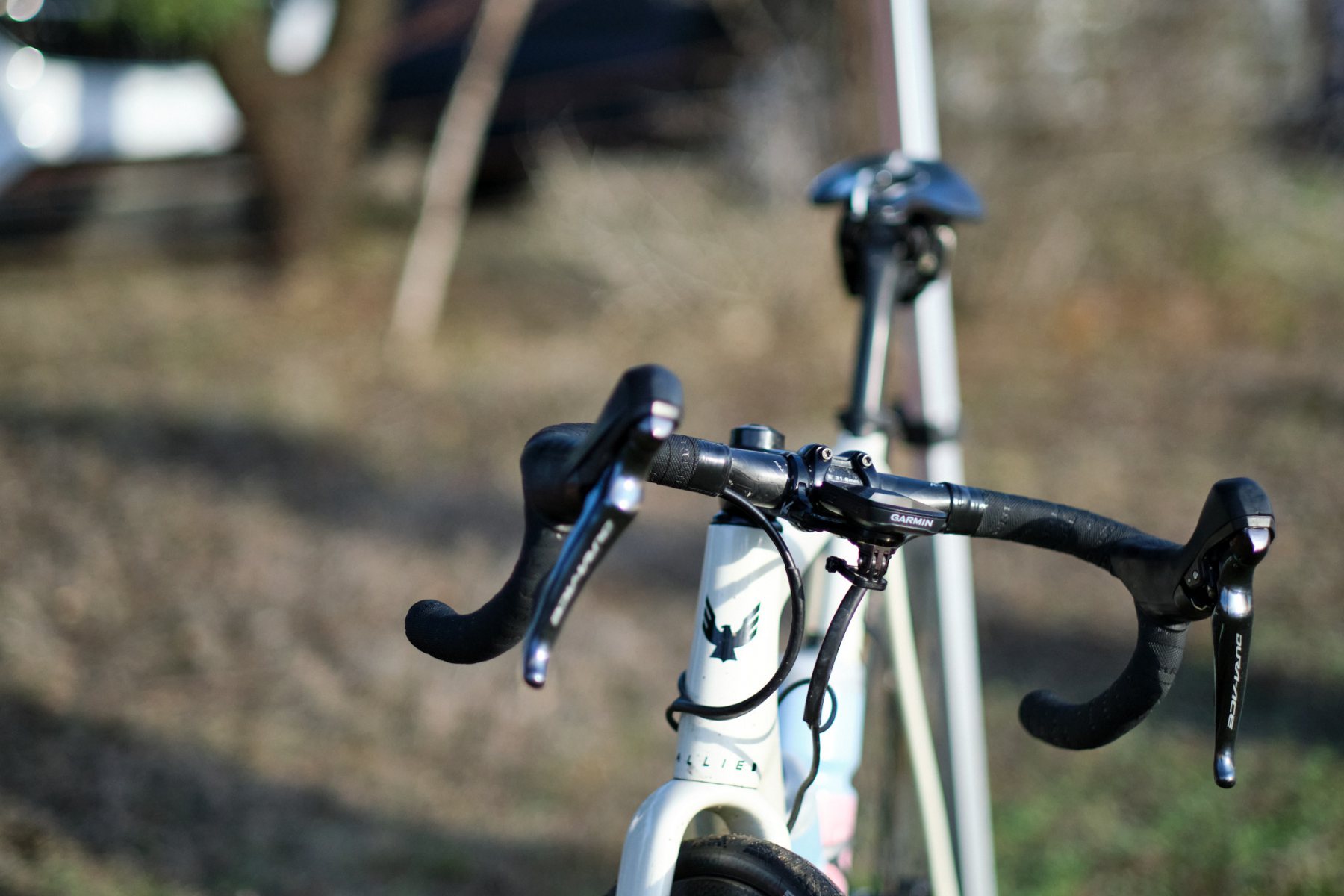Driveway Returns
Bike racing is back! In Austin, at least. After two practice sessions in which organizers worked out their socially distanced staging and start procedures, and riders got a chance to remember what it feels like to ride in a group, the Driveway Series held its first race since COVID19 shut things down in March. The lack of beers, burritos and socializing during the event is a bit of a downer, but a weekly group cycling activity is, nonetheless, far superior to having nothing at all.
The postponement of Driveway was the loss of the nucleus of road cycling in Austin. We have an unusually strong race-oriented cycling community for a city of this size, with amazing group rides and a plethora of outstanding bike shops, all of which serve to support the weekly running of one of the best criterium series in the nation. We’re fortunate to have Driveway at a time when road racing is seeing an overall decline in participation, and I think it provides a strong motivation to train for a large portion of the Austin road-cycling community.
Personally, the loss of the Driveway and group rides significantly reduced my motivation to train. Sure, there’s always Strava, but something about being dropped or struggling for breath while the person next to you continues their casual conversation seems to more thoroughly shame me into not skipping workouts.
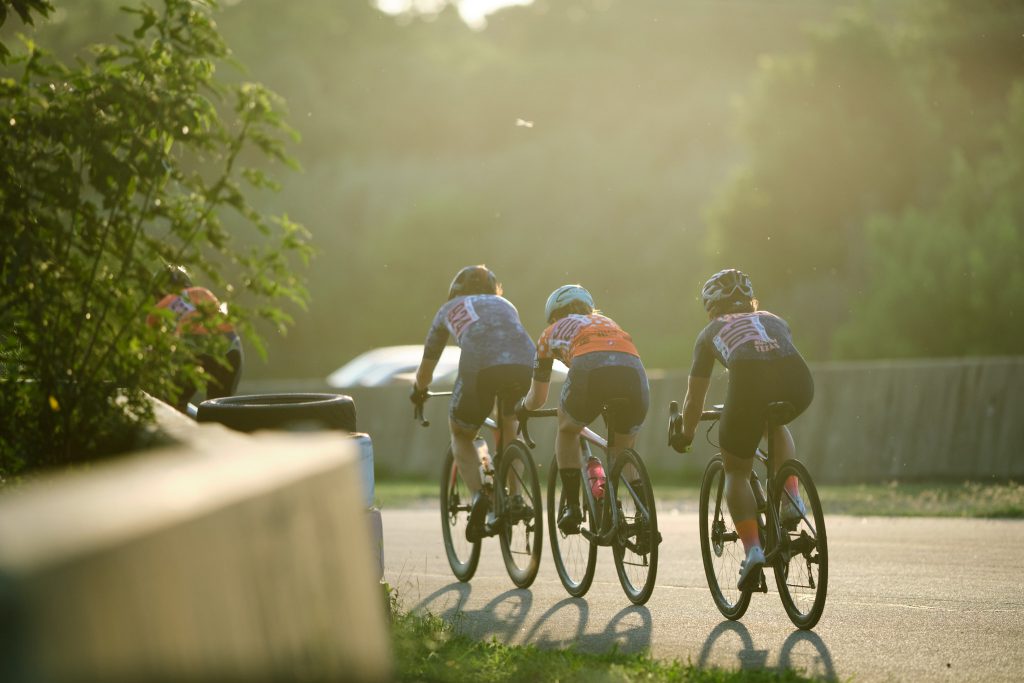
I was present for one of the practice sessions as well as the first two races. It was so good to feel the community vibe we’ve been missing for over three months. A poorly timed meal led me to dropping out (excuses) of the first event and I was dropped this week, but I didn’t regret participating. Afterward, though, I couldn’t help but ruminate on the nagging question that’s probably on everyone’s mind: Should we be doing this?
Some googling reveals hints of upcoming USA Cycling sanctioned events, but Driveway Series seems to be one of the first to reopen. USA Cycling began accepting event permits starting on June 1st, however, organizers are still beholden to local regulations, which are limiting what’s possible in many states. Here in Texas, “adult sporting leagues” have permission to operate and, as long as it’s legal, that’s exactly what Driveway is doing.
Risk?
A scary image has made its rounds on the internet over the past few months that succinctly describes what we’re all picturing when it comes to riding in groups. Are we doing this to each other?:
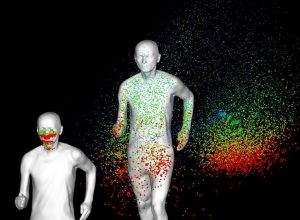
The image is from a study conducted in Belgium that spread quickly through social media, probably because it’s alarming, and what better purpose does Facebook serve than to spread hysteria? The purpose of the study was to examine the possibility of COVID-19 contagion through exhaled aerosols. And though the study wasn’t as comprehensive as many were led to believe, it’s certainly worth considering in light of uncertainties about how the virus spreads.
Numerous other studies look into spread via exhaled droplets and aerosols, but none come close to simulating a peloton of heavy-breathing cyclists moving at 25+ mph in 95 degree heat and 70% humidity. How fast is the air around me dispersed? How quickly is my breath evaporating?
According to USA Cycling’s Chief Medical Officer, Dr. Michael Roshon, the risk of outdoor spread of the virus is quite low. This even holds true for well-ventilated enclosed spaces, such as on airplanes.
Should we listen to Dr. Roshon? I don’t know, but the fact that the race is taking place shouldn’t remove all suspicion about whether participation is safe.
The CDC, WHO and City of Austin’s guidance surrounding the virus is certainly worth heeding if we’re to assume that the virus is present in the peloton. But what if it isn’t? Should an estimate of the likelihood that we’re coming into contact with infected individuals be part of our personal assessment of whether it’s safe to race? I’m sure this is a calculation everyone made before the event. And what about age? From a personal risk standpoint, most participants are in low-risk age groups. Still, helping to slow the spread for the greater good should be the goal for low-risk populations.
Race organizers take temperatures at the gate, don’t allow spectators, require socially distanced staging and require participants to leave immediately after the race. The only real opportunity to spread the virus is while riding within the size-limited field. If someone in the group is infected, how much are the others being exposed? Is it enough to catch COVID19?
So little is understood about how the virus spreads and, in this particular setting, even less so. If we’re to follow the ethos of taking every possible precaution against the virus, then no, racing probably isn’t recommended. But when one considers the socioeconomic position of the participants — mostly professional class knowledge workers who are able to work from home or young people who aren’t currently in school — as well as the groups and overall numbers affected by COVID19 in Austin, viewable on the dashboard, I have to wonder how likely it is that another rider is a carrier. Though I’m wearing a mask as I write this, my inconsiderate, self-justifying estimation tells me that participation is generally safe due to the low chance of encountering an affected rider, along with the (perceived) small probability of spread during a crit race.
In looking ahead at upcoming events on BikeReg, it’s unclear what’s actually taking place and what simply hasn’t been updated. My out-of-town ‘A’ event for September was just canceled, and the TXBRA calendar looks bleak, with everything but a couple of gravel events and Driveway marked as ‘Suspended’. As a goal-oriented person without much to do, I’m personally willing to take the risk and race my bike. It’s something to look forward to while everything else in life is put on hold, and the risk to myself and others is small, especially when compared to all the other risks one might encounter by spending ten hours per week on a bicycle.
I support the decision to reopen the Driveway Series. It’s a shining star with big potential on a shrinking road racing schedule. If a tiny risk must be borne for Driveway to survive, then so be it.
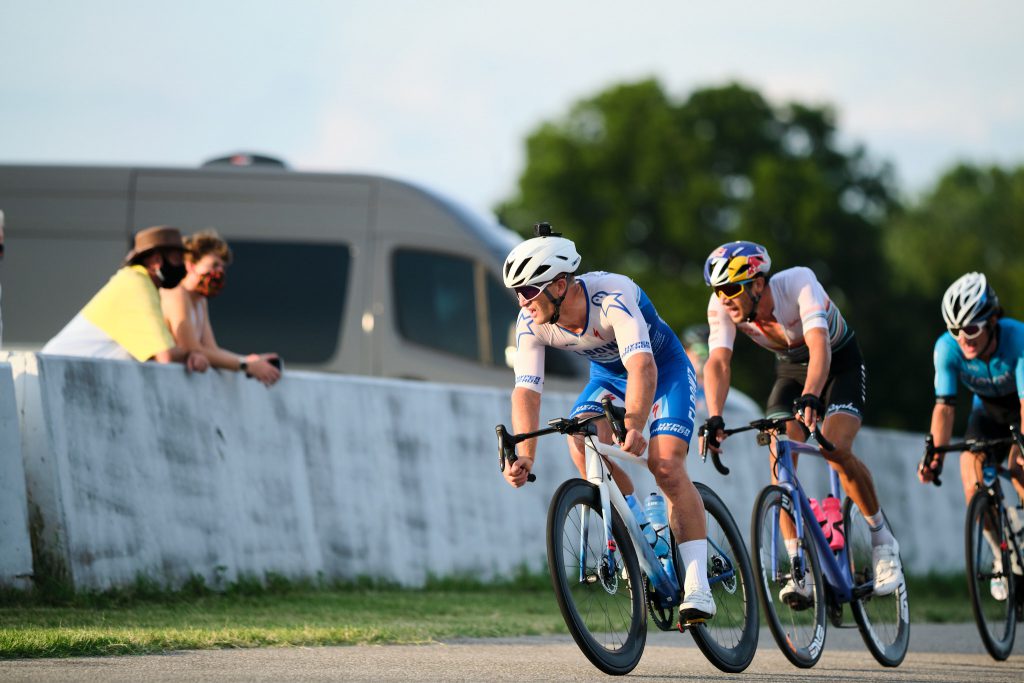
First Gravel Experience: Red Rock Roubaix
Like so many things, it was through a random Instagram post that I discovered Red Rock Roubaix, a 110-mile gravel ride that was to take place on a January weekend in Austin. Some googling revealed the event’s history, but I couldn’t find much about the 2020 rendition, and whether the circle of invited guests extended to me was not yet obvious. Nonetheless, I marked it on my calendar and waited.
The ride was hosted by BTC (Beat the Clock) Cycling, a club local to Austin, though probably nationally recognized by those who follow cycling Instagram. The Austin bicycling community does well in promoting active road riding participation devoid of snobbishness and with a hint of the counter-culture vibe of some other cycling sub-groups. My interaction with BTC is limited, but they're well-known in Austin and seem to contribute to the openness of our community, which is outstanding.
Mentions of the event made it from fleeting IG stories to permanent posts as the day grew nearer and, eventually, I came across the most official of social media announcements: a Facebook Event. Soon, friends and acquaintances began talking about attending. It was at that point that I made a decision to do the ride. Without a dedicated gravel machine, only the question of what bike to use remained.
Back when steel was real and “gravel” was simply known as “the road”, I suppose this wasn’t a question I’d have even asked myself. Today, though, I have an entirely new canon of marketing materials and aesthetics to internalize before I can ride my bike on gravel, not to mention my deep fear of chipping the thin coating on my cheaply manufactured and expensively purchased road bike. Sarcasm aside, bigger tires are more comfortable, roll better on unpaved roads and, unless you want to ride alone all day, their resistance to flats is a huge plus.
Spending a large amount of money on something I had yet to try was out of the question and so I was left with three options: Ride my road bike as-is, going slow and risking flats; buy more robust 28c tires, still go slow and maybe flat less; rent a proper gravel bike and feel confident enough to keep up with the group. I opted for the third choice, and since my road bike is a Trek, I was comfortable renting another Trek gravel bike from my LBS in the same size with reasonable amount confidence that it would fit.
At 112 miles, the route was also actually longer than I’d ever ridden in a single go. I’ve ridden centuries, but my longest ride for the season was less than 80 miles. With only a couple of weeks remaining before the ride, a long-ish fitness test of sorts would be my only opportunity to verify that I could go the distance, and so I added a weekend ride of 80+ miles into my normal schedule. It was on an exceptionally windy day with a long section taking me straight into a headwind. Toward the end, I battled the wind for over an hour, with two-hundred watts equating to something like 10mph. It was miserable, but left me confident that I wouldn’t have trouble finishing.
Bike choice and fitness squared away, I was left with anticipatory IG stories from the organizers and wasteful hours spent researching gravel bikes that I’ll never buy.
El Dia
The day before the race I stopped by the LBS to pick up my rental - a Trek Checkpoint ALR 5, with 105 and 40c tires. Taking a jaunty route home via gravel path that I typically avoid on my commuter gave me a feel for the bike on dirt. This was actually my first experience on lower pressure tires, and I’m somewhat embarrassed to acknowledge the excitement I felt gliding over the path on something wider than 28s.
At home, I set up the bike with a top tube bag for extra food and a camera (which created the pictures you see here). The forecast showed a large temperature increase over the course of the morning, so a small handlebar bag was also added for the storage of my vest, arm and leg warmers, if needed. According to the internet, having the bag also looks more gravel-y.
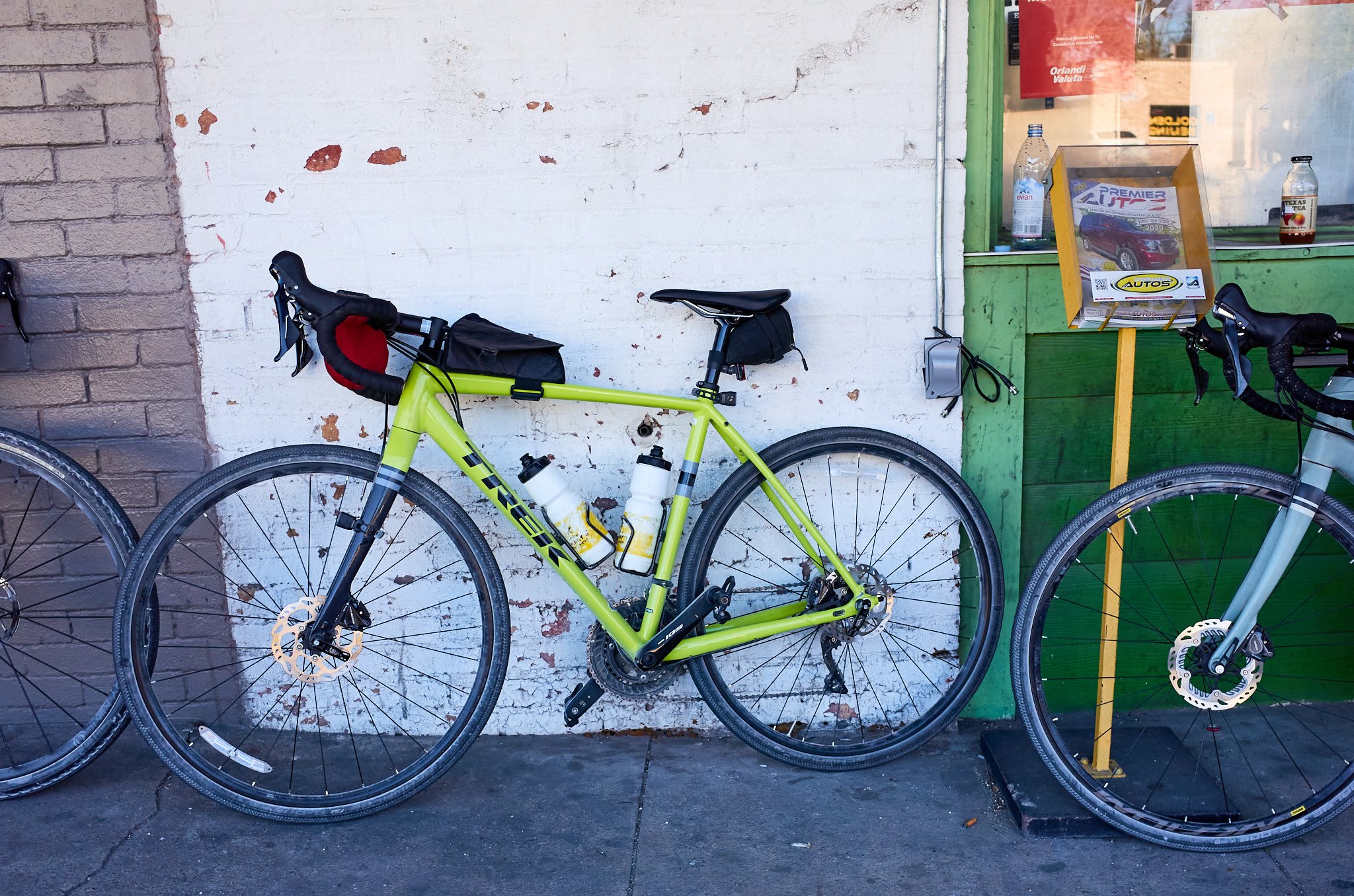
Rental bikes come stock, which usually means all of the factory-installed reflectors are still present, as well as the “dork disk”. Fortunately, I had reason to remove the front reflector to install my computer mount, but the disk remained. I had no choice but to burn with shame for the entirety of the following day.
Morning came. I woke early in order to leisurely prepare, enjoy my coffee and eat something a couple of hours before leaving for the ride. A normal morning was the goal, having mostly prepared the evening before. Following one large oatmeal with peanut butter, two coffees and three pumps to top off my tires to 50psi, I departed home for the four mile journey to the event starting location, where I planned to arrive about 45 early.
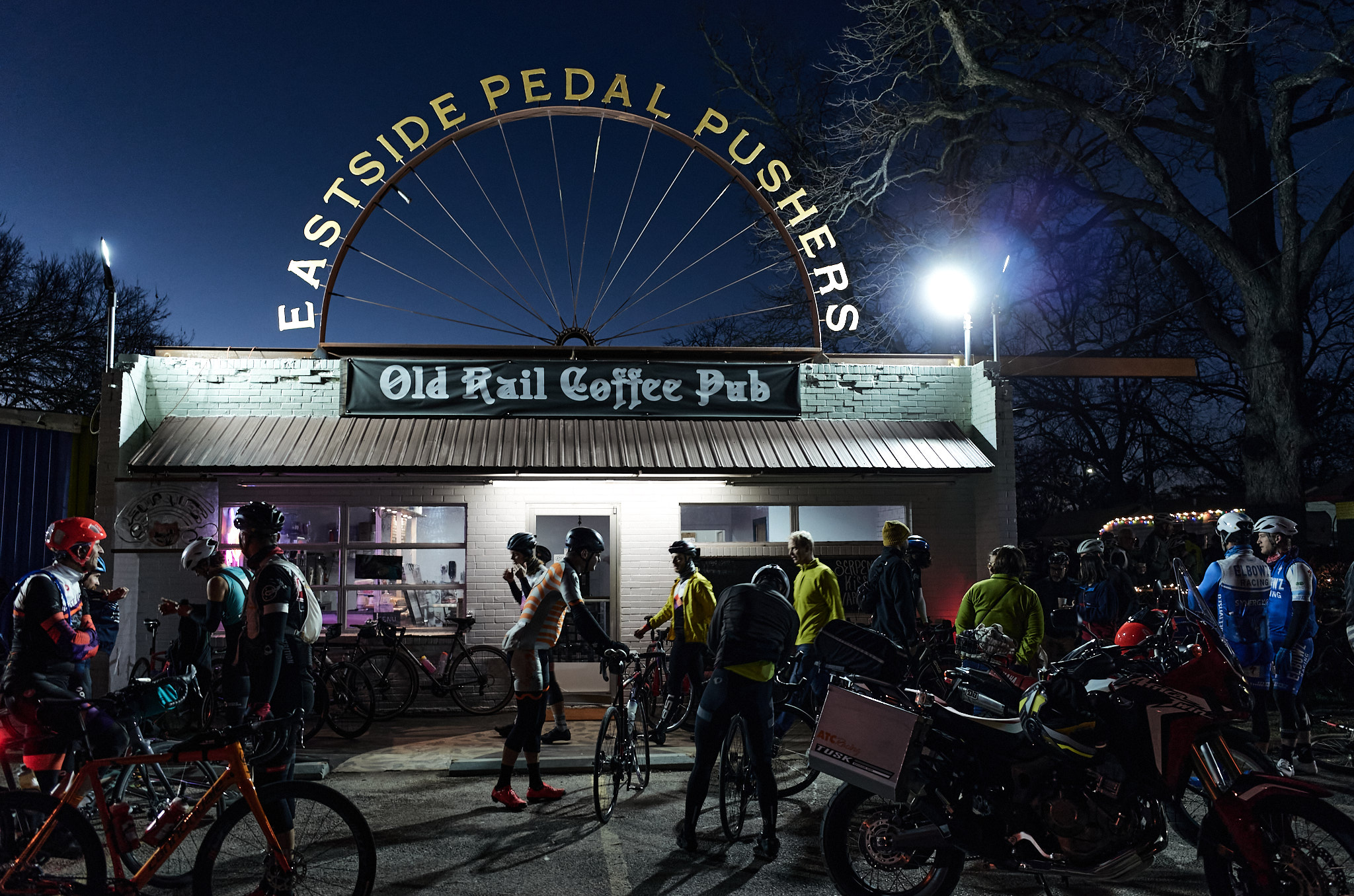
Pre-dawn rides through the city are always enjoyable. The streets are empty. It’s just you and the cats, especially before 6am on a Saturday. On this particular morning, the added presence of the distant blink-y lights of other riders added to the ambiance, crossing in front of me, turning corners behind me, pulling in front, all traveling to the start, alone but together.
At the registration table I paid my entry fee via Venmo, hoarded some free snacks for the road (an amazing selection!) and looked around earnestly in order to appear occupied, as I was apparently the only person who didn’t know anyone.
Some time later, after gawking at the awesome bikes and oogling from a distance an Austin-based World Tour rider who was in attendance, the friend I had planned to ride with showed up. After one more bathroom break and safety announcements, the lead out began: A “neutral” 5-ish mile lead out by motorcycle to get the group away from the city.
This first portion took us through familiar territory going south out of the city. Less familiar for me, though, was traveling this route with a group of 100+ riders. It felt like a roadie Critical Mass event. Knowing the fast groups would take off as soon as the end of the neutral zone was reached, I made sure to stay mid-pack and enjoy the ride before what I predicted would be hours of riding alone.
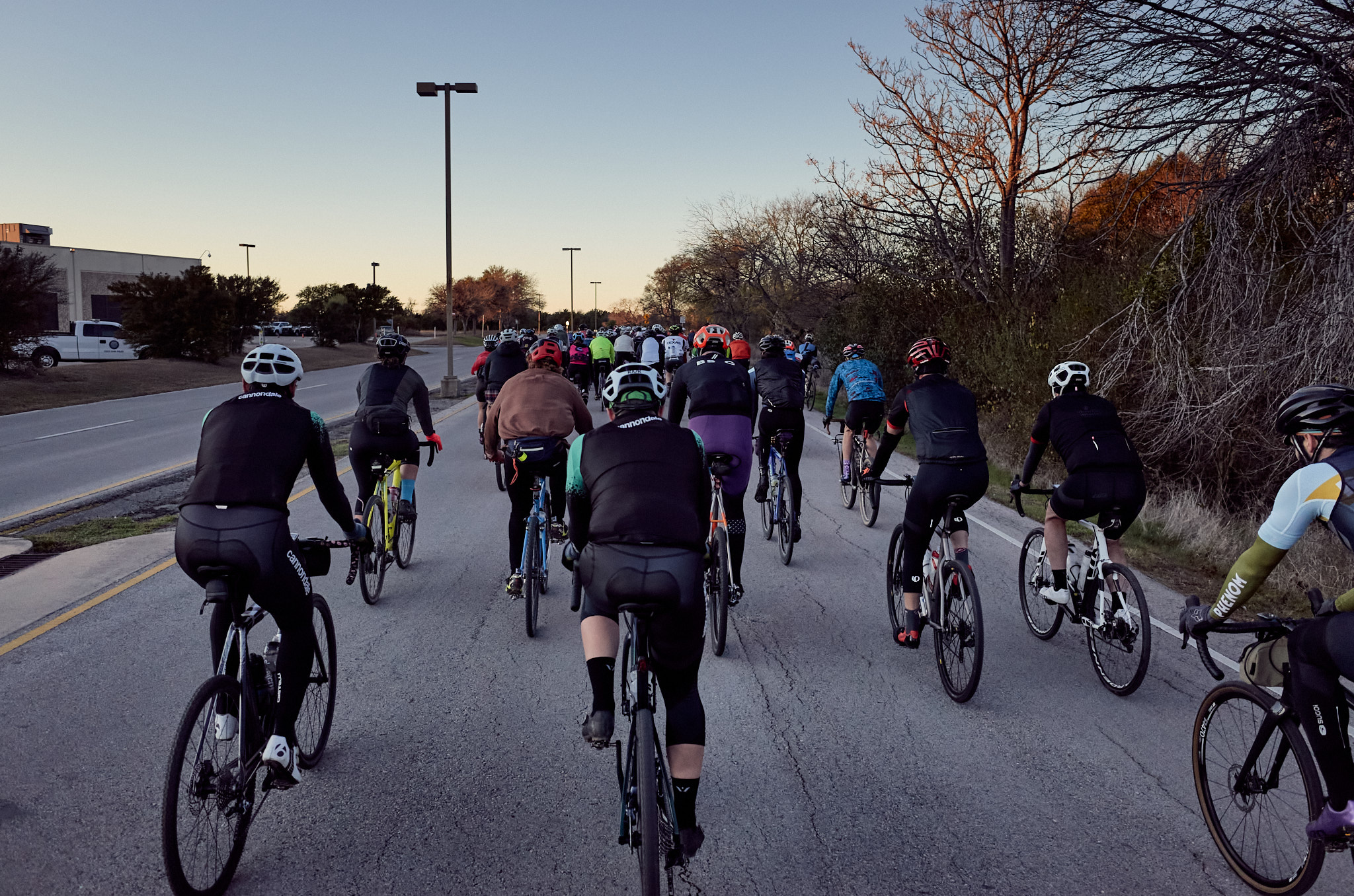
Sure enough, the group thinned quickly as soon as our motorcycle escorts peeled off, and the enthusiasm of some participants caused them to ride well above their fitness, which left me toward the back. I was more measured, and though not particularly strong, knew I’d be seeing many of them again. My riding parter, who is stronger than me, was also caught up in the excitement and, according to my power meter, maintaining a pace I couldn’t possibly match for 110 miles. I told him so and, fortunately, he was generous enough to dial it back before I cracked.
The first time my tires hit gravel, I noted to the rider next to me that this was my first gravel experience. They were kind enough to share some pointers, and on we pedaled, briefly joining and leaving small groups, small groups joining and then leaving us. The social aspect was actually one of the most enjoy able parts of the event. He were all are, strung out over long distances pedaling away. Reports of the locations of other groups were shared, pace lines were formed and broken, beautiful scenery photographed. Interaction made the miles quickly tick away.
Throughout the ride we traveled unpaved farm roads of a type I never new existed in the area. Small lanes through rolling hills, bordered by pastures or farmland on either side. It was some of the most scenic terrain I’ve ever seen on a bike (aided by the beautiful weather), and I found myself lamenting its loss as encroaching sprawl creeps further out of the city. In fact, the graphic for the event depicts a rider outrunning a paver with hills of “tacky-tacky” houses popping up behind it. Such a shame.
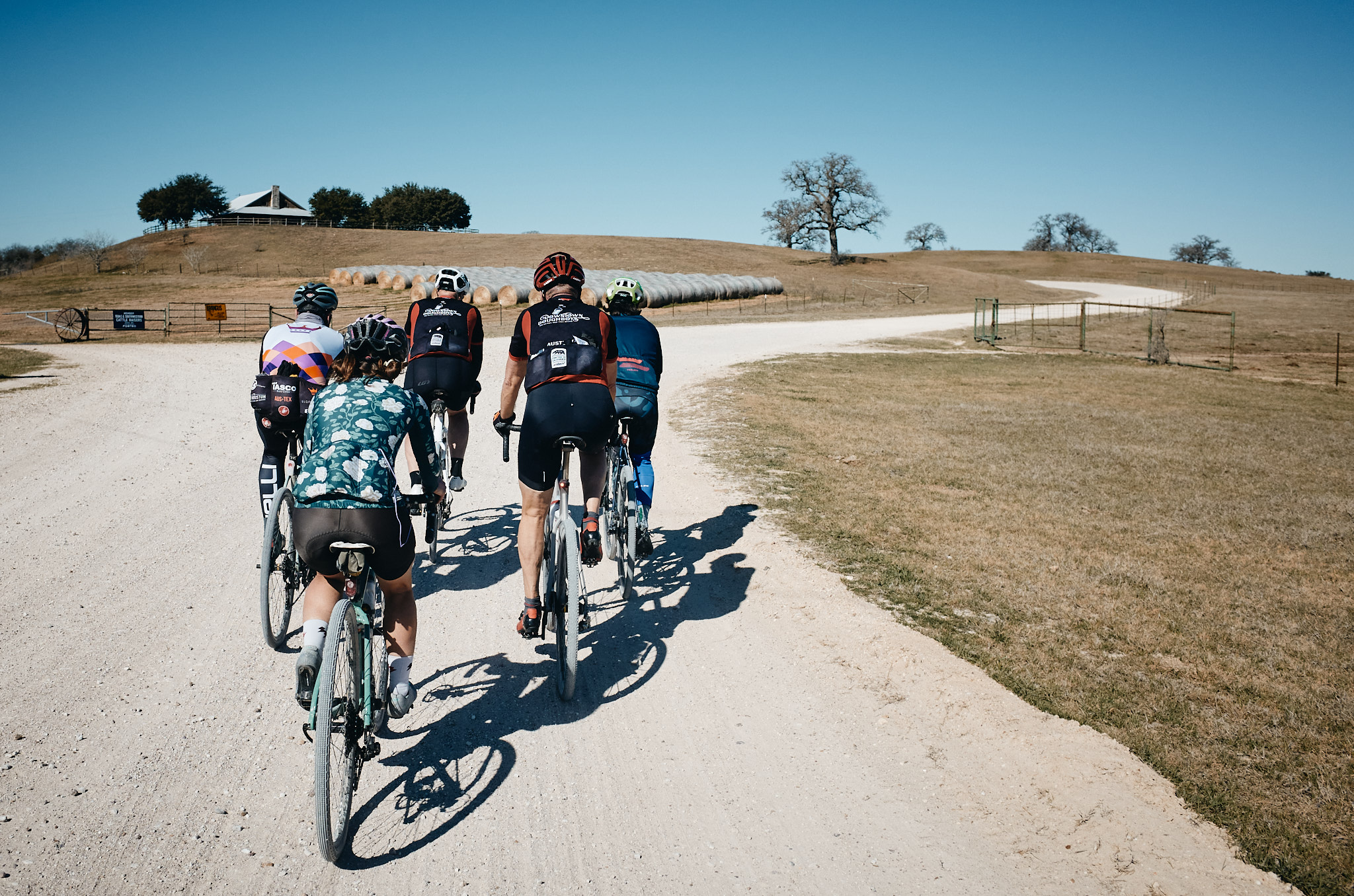
A section of the route required the crossing of a major highway in a populated area, and with it a few roads unfriendly to cyclists. Riding on the large shoulders of Texas state highways isn’t new to me, however, traversing this area also required taking the lane on a high-speed road near an interstate highway off ramp. Having a small group made this easier, but I’ll remember it as one of the sketchiest roads I’ve ridden.
Nearing the end, groups began to combine. I believe we were up to twelve for a short while with a bit of a rotating pace line on paved sections, which certainly helped as I was beginning to tire. Unfortunately, a rider who stuck with us for a large portion of the event was left behind. No hard feelings though, and I’ve ridden with him a couple of times since.
My partner and I found ourselves alone again for the home stretch. One final store stop in a familiar spot to top off my sugar, and we brought it home on an oft-ridden trail leading to town. The ride was essentially “over” for me as we arrived back in well-known territory, as I knew exactly how far we had to go. Amazingly, I was feeling quite strong at the end. My much shorter headwind-cursed training ride felt significantly more difficult.
Incredibly, my Garmin died precisely as I pulled into the parking lot at the end of the ride, crushing my dreams of immediately uploading to Strava. Judging by the progress of the after party, we were probably somewhere in the middle of the group. Welcoming finishers was good beer, hamburgers and the awesome vibe of the Austin cycling community, which is both close-knit, yet big enough to welcome newcomers.
In the days since RRR, I haven’t gleaned any special insights about riding gravel, except that the focus of such events seems to be more on the community aspect than the ride itself. One of my goals for 2020 is to simply “do bikes”, let other things fall away and see what happens, and with the explosion of gravel events, attention from high-level teams and increased local gravel group riding opportunities, I see embracing the genre as a positive, despite the added cost.
Red Rock Roubaix was a fun event, executed flawlessly on a perfect day. The down-to-earth nature of the ride, especially, makes it one by which I'm sure I'll be measuring many others.
Race Report: TKMRR
My first opportunity to get dropped came last weekend at the 2020 Tommy Ketterhagen Memorial Road Race, presented by Holland Racing. It’s an awesome event and the first race of the season on the Texas Bicycle Racing Association Calendar.
Formerly known as the Oatmeal Road Race, the ride was held in Bertram, TX, this year and last on a punchy 16-mile loop dotted with a few punchy climbs, including one leading to the finish for a bit of extra suffering as you sprint to the line. Wind seems to be the theme of the ride, with a stiff northerly wind setting the pace on the first six miles of the course both in 2019 and this year. The sun was shining, though, and temps were just warm enough to ride with little or no cold weather gear.
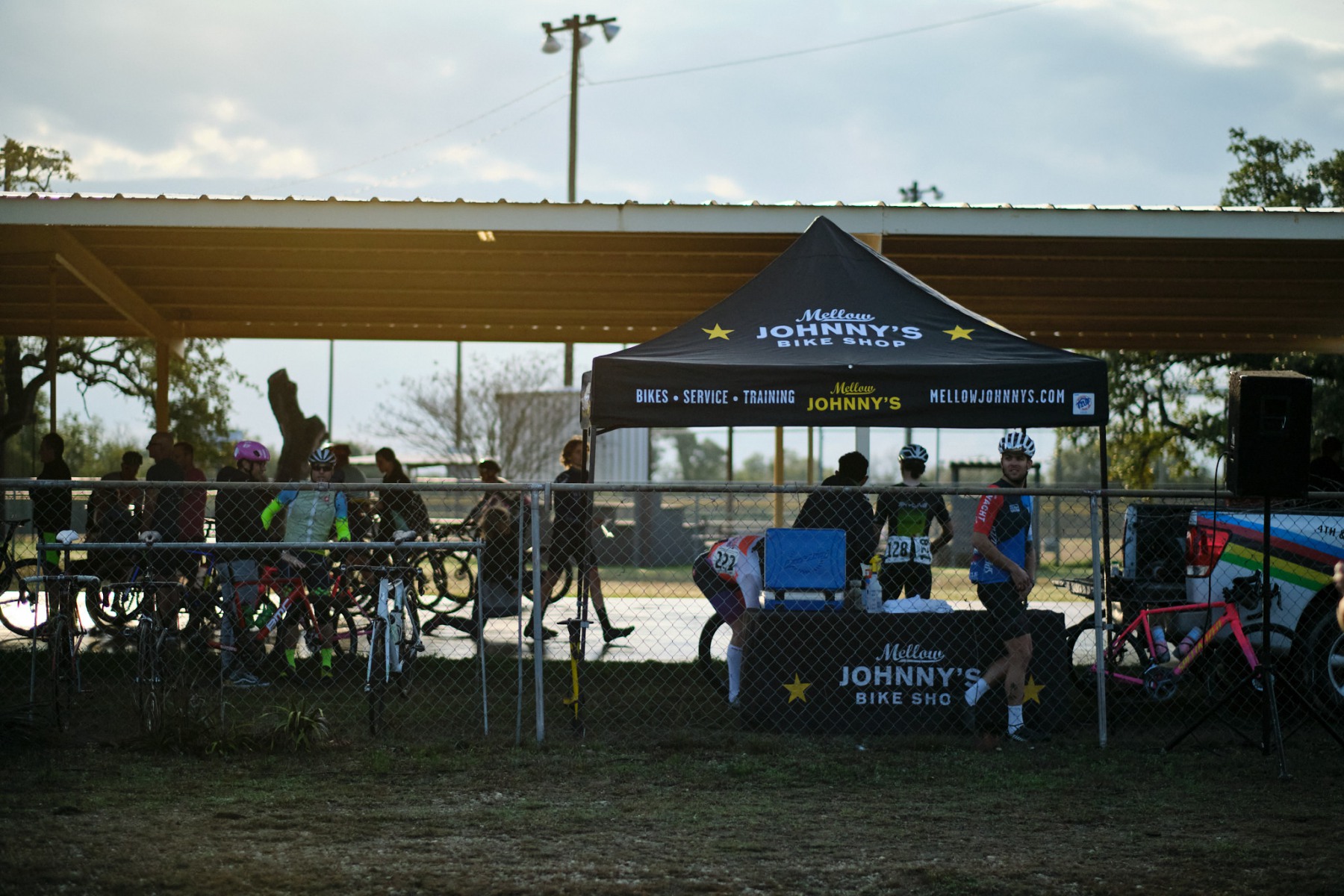
The race’s namesake, Tommy Ketterhagen, was a well-known member of the Austin road cycling community. In 2017, he was fatally struck while out on a training ride by a driver who left the scene. Though it took some time, justice was eventually served in Tommy’s death as the driver was sent to prison for a ten-year sentence.
The race is a way for Tommy’s family and friends to assemble in remembrance around something that he loved to do and, for the rest of us, an wonderful display of the camaraderie in the Austin cycling community.
As a slow, fat guy, my own race outcome was known weeks in advance. For the more competitive riders, however, the field was fair game. This year saw Elevate KHS Cycling return to the podium in the P123 race. Notably, among the amateurs, Austin’s Violet Crown Sports Association podiumed in three out of four races, with last year’s Junior’s winner taking first place in the 4/5A category, another Violet Crown cyclist winning the Junior Category race, and yet another with a solo win in the P123 category.
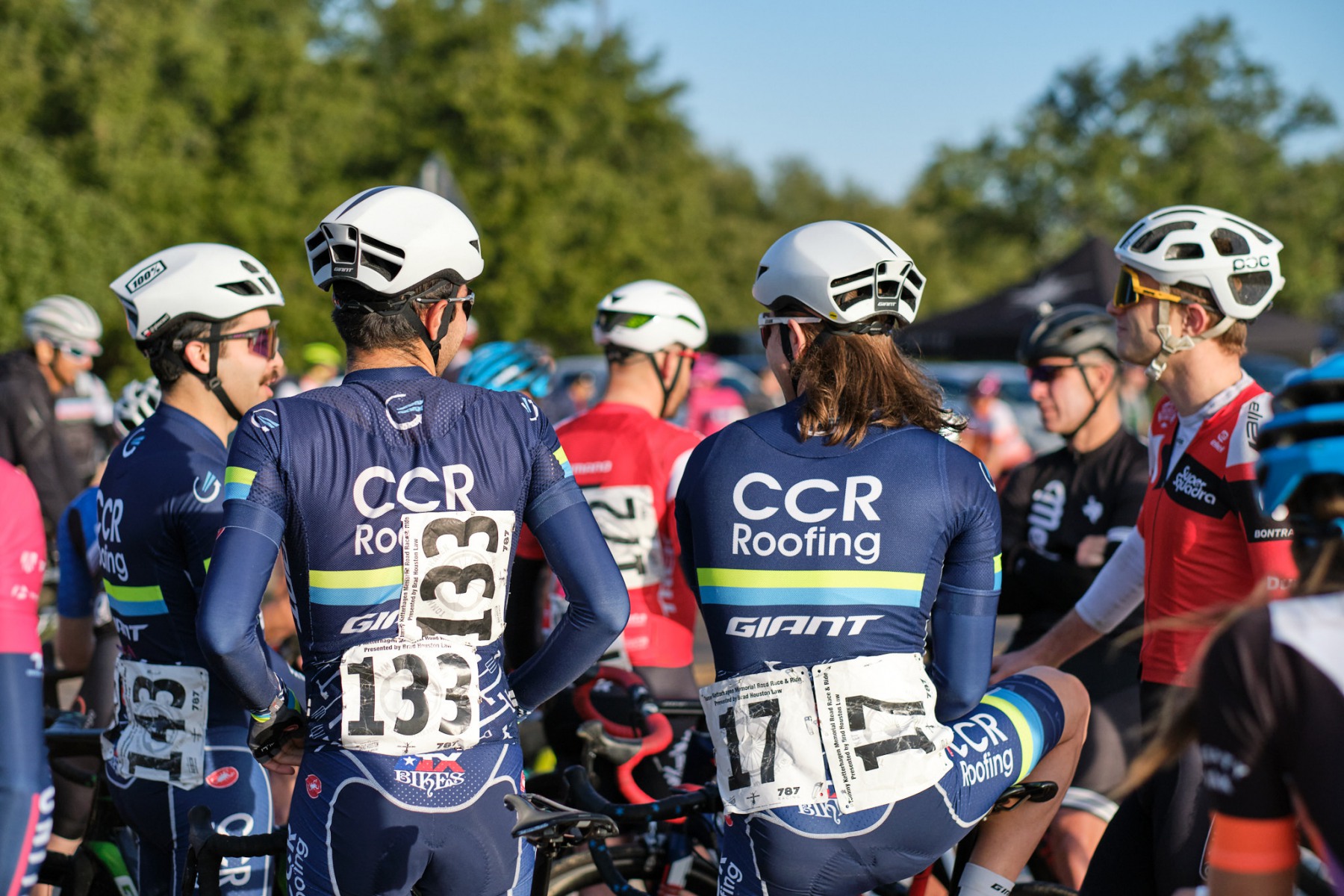
A special shout out to the race mentors, who do an outstanding job out on the course. The roads were open, and I saw their strict enforcement of the yellow line along with their reprimand of an overly aggressive rider. Most important to me, a mentor stepped in to help a group of us Cat 5s work together in a chase group. Assembling Cat 5s into a cooperative group is like herding cats, as many riders don’t have proper instruction on forming a rotating pace line, echelon or race tactics and, instead, wallow alone, falling further behind. One particular mentor helped keep us together and provided some guidance on climbing, descending as a group and general tactics, which made my participation a significantly more productive learning experience.
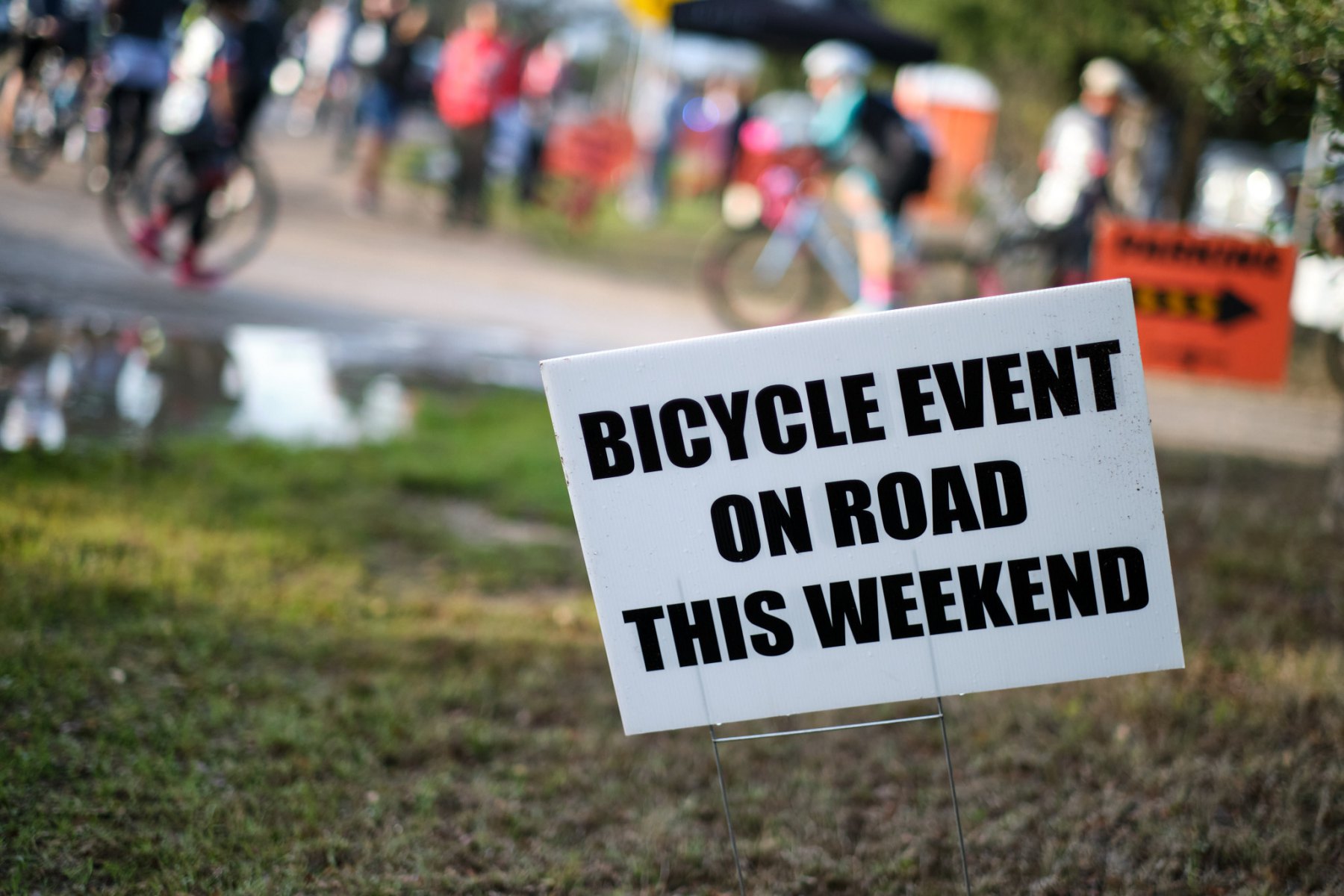
It’s doubtful that many riders target TKMRR as an ‘A’ event, but it’s a great opportunity to shake off the cobwebs of our brief Texas offseason and test one’s fitness as the season opens. This chance to get into the racing mindset at the beginning of January provides a distinct advantage over some colder climes.
Next on the Texas road racing calendar is the Davy Crockett Classic in Crockett, TX, featuring a time trial, criterium and road race.
Photos here:
[ngg src="galleries" ids="1" display="pro_tile"]
